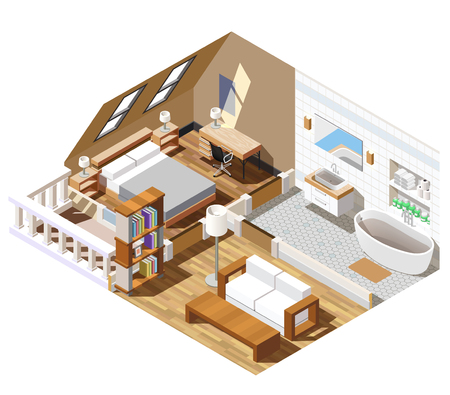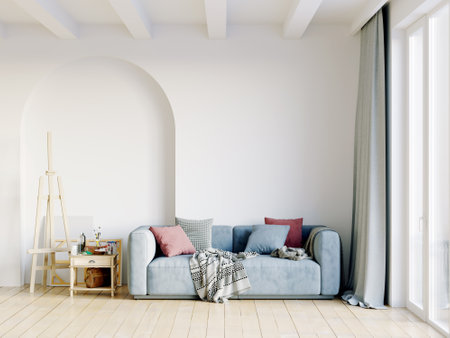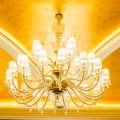Understanding the Importance of Natural Light in Period Properties
Period properties across the UK are celebrated for their character, craftsmanship, and architectural heritage. However, these homes often feature layouts and original details that can restrict the flow of natural light. Thick walls, small or sash windows, deep-set rooms, and intricate cornicing were all typical of bygone eras and, while beautiful, can sometimes result in darker interiors. In many cases, this is further compounded by north-facing aspects or mature landscaping outside that shades the windows. Making the most of available daylight is crucial—not just for aesthetics, but also for comfort and wellbeing. Enhancing natural light helps preserve the authentic feel of a period home while ensuring it remains inviting and functional for modern living. By understanding how original features impact light distribution, homeowners can make informed choices to maximise brightness without compromising historical integrity.
Assessing Existing Light Sources and Constraints
Before embarking on any lighting improvements in a period property, it’s crucial to evaluate the current situation thoroughly. Understanding how natural light enters your home — and what might be restricting it — will inform every subsequent decision. Start by identifying the size, style, and placement of existing windows. Many period properties feature sash or casement windows, which may be smaller or more deeply recessed than those in modern homes, affecting the amount of daylight that penetrates interior spaces.
Next, consider the property’s orientation. Rooms facing south typically enjoy more sunlight throughout the day, while north-facing rooms can often feel dimmer and cooler. East- and west-facing rooms receive direct sun for only part of the day, which influences how you approach layered lighting solutions.
It’s also important to take stock of architectural features that could impact natural light. Deep window reveals, thick stone walls, decorative cornicing, or original shutters can all create shadows or limit the spread of daylight. Equally, external factors such as mature trees, neighbouring buildings, or historical restrictions on altering facades must be taken into account.
Key Factors to Evaluate
| Feature | Potential Constraint | Considerations |
|---|---|---|
| Window Size & Type | Small panes, deep sills | Limits daylight entry; may need supplementary lighting |
| Orientation | North/South/East/West facing | Affects warmth and duration of natural light |
| Architectural Details | Cornicing, beams, shutters | Create shadows; may require accent lighting to compensate |
| External Obstructions | Trees, outbuildings, planning restrictions | Might block sunlight or limit window changes |
Carrying Out a Light Audit
Walk through each room at different times of day to observe how sunlight moves and note any particularly dark areas. Pay attention to how original features interact with available light: do they bounce it around attractively or absorb it? This practical audit will guide decisions about where you’ll need to supplement with artificial layers—while respecting the integrity and character of your period home.

3. Selecting Suitable Layered Lighting Approaches
When enhancing natural light in period properties, it is vital to choose layered lighting solutions that respect the building’s historic character while providing modern practicality. The three primary types of lighting—ambient, task, and accent—each serve a unique purpose and can be artfully combined to enrich interiors without overpowering original features.
Ambient Lighting: Foundation for Comfort
Ambient lighting serves as the foundational layer, providing general illumination throughout a space. In period homes, this can be achieved with ceiling-mounted fixtures that echo traditional designs, such as discreet pendant lights or subtle chandeliers. Consider soft LED bulbs with a warm colour temperature to mimic the gentle glow of classic incandescent lamps, maintaining an inviting atmosphere and complementing daylight streaming through sash windows or stained glass.
Task Lighting: Practicality Meets Heritage
Task lighting addresses specific activities like reading or food preparation. In heritage settings, opt for fixtures that harmonise with existing architectural details—think brass or wrought iron wall sconces near reading nooks, or vintage-inspired table lamps on period sideboards. Adjustable floor lamps also offer flexibility without permanent alteration to original plasterwork or wood panelling, ensuring you uphold conservation standards while adding functional brightness where required.
Accent Lighting: Highlighting Architectural Features
Accent lighting draws attention to decorative elements such as cornices, fireplaces, or ornate mouldings. Use picture lights above artwork or LED strip lighting tucked discreetly within alcoves to emphasise craftsmanship without introducing harsh glare. This subtle approach enables you to showcase period features and enhance the play of natural light during dusk or overcast British afternoons.
Combining Layers Thoughtfully
The key to maximising both natural and artificial light lies in blending these layers seamlessly. Avoid over-lighting by dimming artificial sources during bright daylight hours and allowing sunlight to take precedence. Use layered controls—such as dimmer switches and separate circuits—to tailor ambience according to the time of day and activity, preserving both energy efficiency and the authentic charm of your period property.
4. Choosing Fixtures and Fittings in Keeping with Architectural Heritage
When maximising natural light through layered lighting in period properties, it’s essential to select fixtures and fittings that not only enhance illumination but also honour the building’s unique historical character. Careful consideration of style, material, finish, and placement ensures that modern comfort blends seamlessly with traditional British elegance.
Respecting Original Features
Begin by identifying key architectural elements—such as cornicing, ceiling roses, or ornate mouldings—that define your property’s heritage. Lighting should complement rather than overpower these features. For example, opt for discreet recessed downlights or wall washers to highlight intricate plasterwork without drawing attention away from it.
Selecting Period-Appropriate Designs
Choose fixtures inspired by the era of your property. In a Victorian terrace, glass pendants with brass detailing or cast-iron sconces can echo historic charm. For Georgian homes, look for elegant candelabra-style chandeliers or classic lanterns. It’s wise to avoid overly contemporary designs that may jar with the original aesthetic.
Matching Finishes to Existing Hardware
Consistency is key. Match lighting finishes—such as aged brass, antique bronze, or hand-painted metals—to existing door handles, window latches, and other hardware. This approach preserves visual harmony and reinforces the property’s period authenticity.
| Property Era | Recommended Fixture Style | Suitable Finish |
|---|---|---|
| Georgian (1714–1837) | Candelabra chandeliers, lantern pendants | Polished brass, patinated bronze |
| Victorian (1837–1901) | Glass pendants, ornate wall sconces | Aged iron, antique brass |
| Edwardian (1901–1910) | Bowl pendants, art nouveau lamps | Satin nickel, painted metal |
| Art Deco (1920s–1930s) | Geometric shades, stepped ceiling lights | Chrome, frosted glass |
Clever Placement for Layered Effect
Position fixtures thoughtfully to maximise both daylight and artificial light. Place mirrors opposite windows and install uplighters near alcoves to reflect natural rays deeper into rooms. Use picture lights to showcase artwork without overshadowing original panelling or fireplaces. Remember: less is more—avoid overcrowding ceilings with spotlights in favour of layered sources at varying heights.
Professional Advice and Sourcing Authentic Pieces
If you’re uncertain about suitable choices, consult a conservation specialist or lighting designer familiar with UK period properties. Many British suppliers offer reproduction fittings crafted using traditional techniques—these can be an investment in both style and heritage value. Above all, aim for a sympathetic balance between practical illumination and respectful preservation.
5. Incorporating Maintenance and Sustainability Considerations
When enhancing period properties with layered lighting to maximise natural light, it is crucial to address both maintenance and sustainability in your approach. Lighting installations in older homes often feature a blend of classic and modern fixtures, each requiring specific upkeep to ensure longevity and consistent performance. Regular dusting of light fittings, especially those with intricate details or delicate glass shades, helps maintain brightness and prevents the accumulation of grime that can reduce light output. Periodically check for loose wiring connections and signs of wear on switches or sockets, as these can impact safety and efficiency over time.
Adopting LED technology is a straightforward way to improve energy efficiency while retaining the character of period interiors. Choose LED bulbs designed to mimic the warm tones of traditional incandescent lamps for authenticity. Installing dimmer switches allows you to tailor lighting levels throughout the day, reducing unnecessary energy consumption during brighter periods. Motion sensors in less-frequented spaces like hallways or utility rooms are also effective for minimising wasted electricity.
Thoughtful design choices further support sustainability goals. Where possible, position mirrors or reflective surfaces strategically to amplify available daylight and reduce reliance on artificial illumination. Opt for quality over quantity when selecting fixtures—well-made fittings require less frequent replacement and can be more easily restored or upgraded as technology advances. Finally, partner with local electricians familiar with British period properties to ensure all upgrades are sensitive to both heritage features and modern regulations, helping your home remain efficient, safe, and true to its origins.
6. Practical Tips for Homeowners and Tradespeople
Actionable Guidance for Layered Lighting Installation
Whether you are a DIY enthusiast eager to enhance your period property or a professional tradesperson, there are crucial considerations when maximising natural light with layered lighting. The following practical tips will help you achieve optimal results while respecting the unique character of British heritage homes.
Do: Assess the Building’s Original Features
Before any installation, carefully survey architectural details such as cornices, ceiling roses, and window placements. These features not only influence how light interacts with the space but may also be protected under local conservation regulations.
Don’t: Compromise Historic Integrity
Avoid making irreversible changes to original elements like mouldings or plasterwork. Instead, opt for surface-mounted fittings or reversible fixings where possible, ensuring that your interventions remain sympathetic to the property’s historic fabric.
Do: Choose Appropriate Light Sources
Select energy-efficient LED bulbs with warm colour temperatures to mimic natural daylight and complement traditional interiors. Consider using dimmable options and smart controls for greater flexibility in layering light throughout the day.
Don’t: Overload Circuits or Ignore Safety Codes
Always consult a qualified electrician before modifying existing wiring or installing new fixtures, particularly in older properties where electrical systems may not meet modern standards. Follow UK wiring regulations (BS 7671) and seek Building Regulations approval if required.
Do: Respect Planning Permission and Listed Building Consent
If your home is listed or located within a conservation area, check with your local authority before undertaking any significant lighting upgrades. Unauthorised works can lead to enforcement action and loss of heritage value.
Collaborate for Best Results
For homeowners, working closely with experienced tradespeople ensures compliance and high-quality finishes. For professionals, staying updated on both technological advances in lighting and relevant legal requirements is key to delivering safe, beautiful, and compliant solutions that celebrate both natural light and the timeless charm of period properties.


